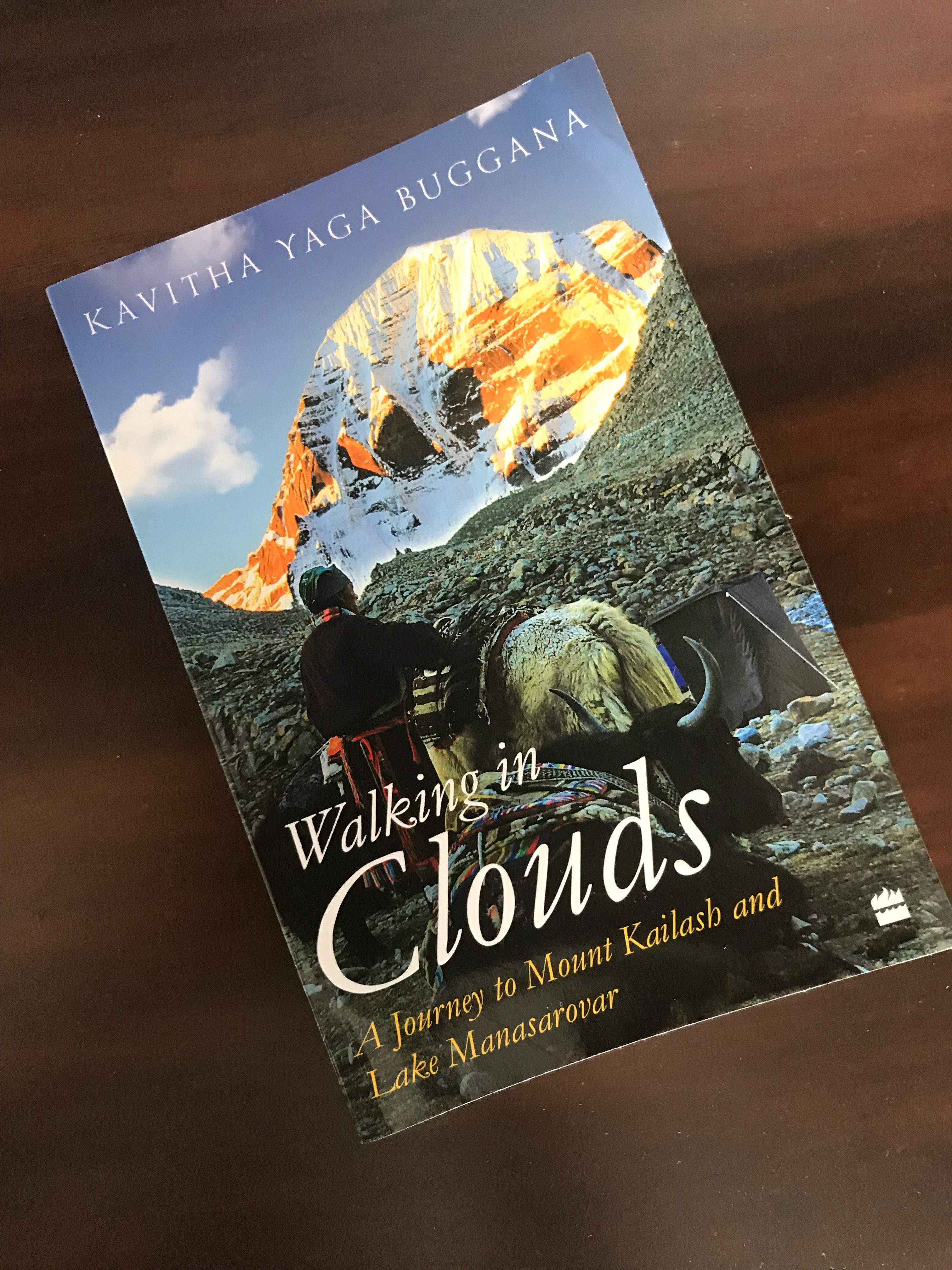Walking in Clouds
What was the driving force that motivated two Indian women to walk to a lake and a mountain, situated at what we could call the roof of the world? What kept them going even when the only question they had in their minds was “Will we make it?”. Kavitha and her cousin Pallu decide to trek to Mount Kailash and Lake Manasarovar. Anyone familiar with the topography of these regions know that this is no cakewalk. The reader journeys with the two women as they take one step at a time. Walking in Clouds, a beautifully crafted travel memoir brings the vibrant landscape of the Himalayan ranges alive.
However, if travelling shows the beauty outside and around you, it also evokes something within. The only question that I had as a reader when I started the book was what led these women to take up this self-driven challenge? They were happily settled in their comfortable urban lives with their children and families. What motivated them to take on something so perilous?
The answer may lie in the complacency and comfort of modern life. The emptiness of having everything I suppose! “In our upper class bubble in Hyderabad, life is a set course of education, marriage, children, money to maintain a certain standard in society, and the retirement “writes Kavitha.
Motivation aside, once they decide to undertake this journey, the reader also takes it with them. The beautiful lyrical language used to describe the wondrous natural untouched beauty will really entice the reader.
But a mission of this magnitude is not easy. Kavitha’s gripping narrative ensures that the reader feels their difficulties and challenges as much as the beauty they witness. The fear of death as they fly in a small aircraft over perilous mountains, the sheer physical exhaustion of the trek that is unimaginable to the most avid hobby mountaineers; mountain dogs that have tasted human flesh; nomads all around- some friendly and some not so friendly; the vagaries of nature; a tryst with death; the saga of international disputes ; the grim reality of climate change ; – these are some of the themes woven intricately into this gripping memoir.
“My muscles plead with me to stop. Every now and then, I have to pause, catch my breath, and swallow my panic” writes the author. At another point she says, “The simple act of walking is a chore. Nevertheless, I keep putting one foot ahead of the other, stabbing my trekking pole into the ground, pushing onward until my steps take on a rhythm”. But there is hope as well.
“Our bodies deceive us: they can withstand much more than they would have us believe” she states, keeping the spark going strong even in the midst of the icy cold terrains. Yes, one does get a sense of the extreme physical and mental challenges that the trekkers have to overcome before they finally reach their goal.
The book also describes human friendships. Kavitha travels with her cousin, but the experience connects them in ways they may have never imagined before. They travel with an assorted group of foreigners. Seemingly different cultures and people, but all faced with the same challenges as they move towards towards the same goal albeit with different purposes. The bond created here and the friendship with strangers on the path that she describes in the book seems to be a microcosm of how an open well lived life would be if one moves out of one’s comfort zone.
Of course, between the verdant landscape around and the myriad of internal introspections, she also describes the legends and stories of the Lake Mansarovar and Mount Kailash. She riddles between faith and skepticism- was the mythical light they saw on the lake in the dead of the night, something heavenly? Or was it but an illusion of the mind? There are hints about the environmental damage that has been caused, and how politics pervades these areas as well. Kavitha’s lively descriptions of the China-Tibet conflicts through the varied perspectives of her international friends on that trip makes for great reading as well, as do the seemingly strange customs of the tribals up in the mountains (such as polyandry, air burials and so on). In the middle of these we are also given stories from mythology, such as the story of Shiva and Sati.
Who should read it and why…
It is a book that opens your mind, and it is a story well told. This is a tale not only of an actual journey but also of an internal victory. You may read it as a travelogue, and it will delight you with the beautiful descriptions and stories. You may read it as an inspirational book and the story of two women who set out to conquer their perceived limitations. You may read it as a tale filled with myths and stories and nuggets about Shiva, Mount Kailash and Lake Mansarowar.
But, I think more than anything else, it is a book that will inspire you to take your own journey- wherever that may be!
If you want to read another travel-based memoir that is equally inspirational, check out our review of The Shooting Star.





